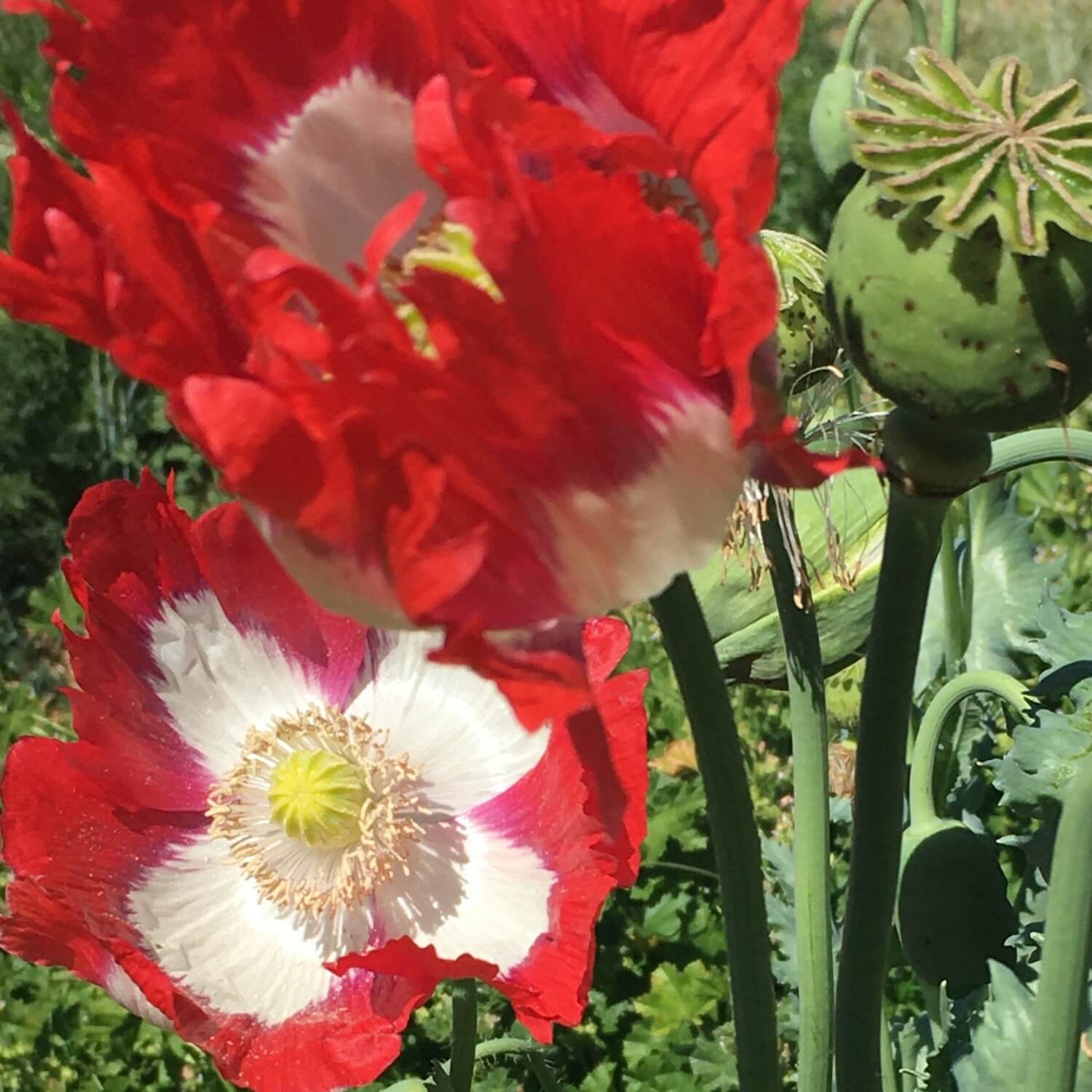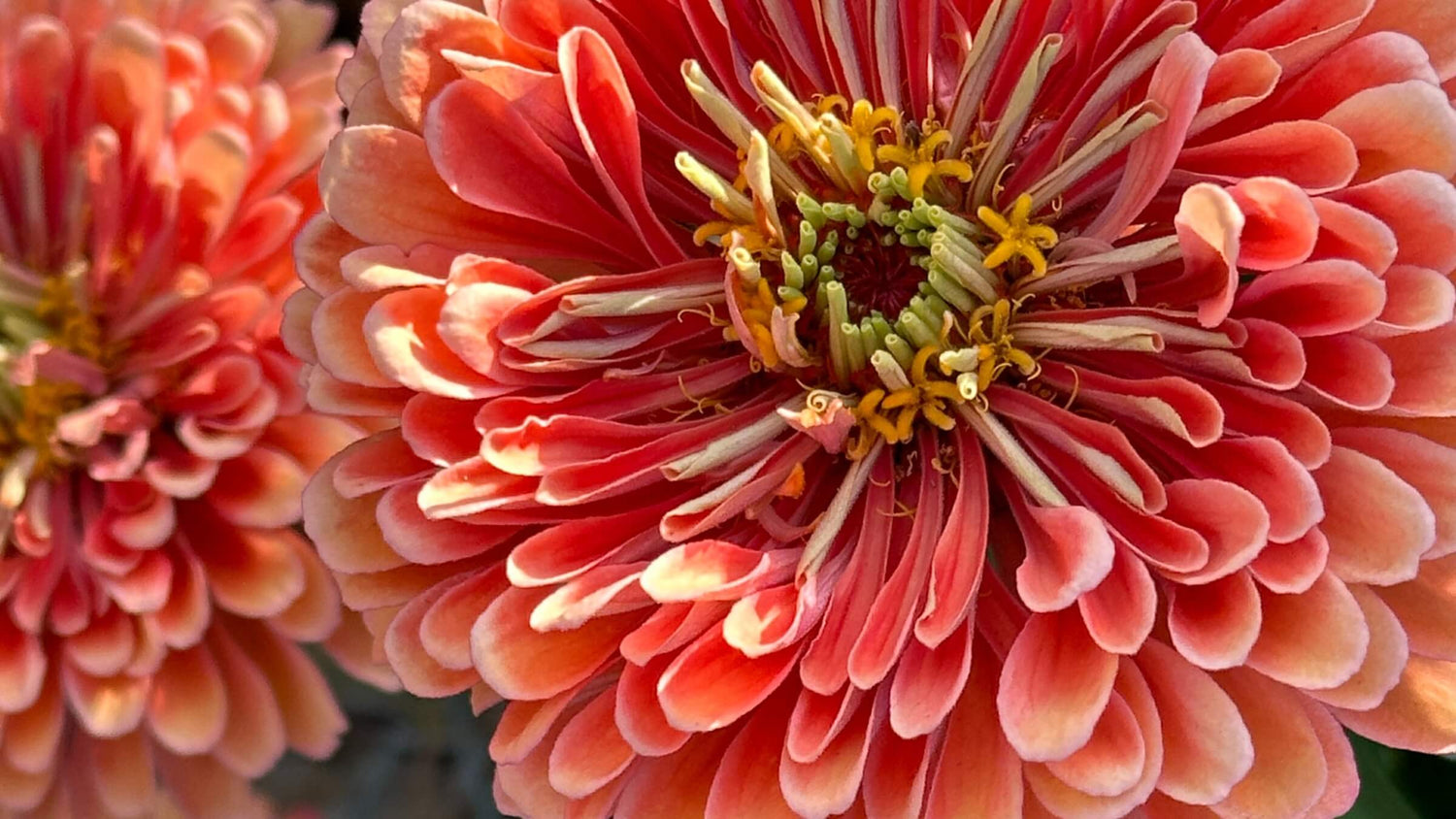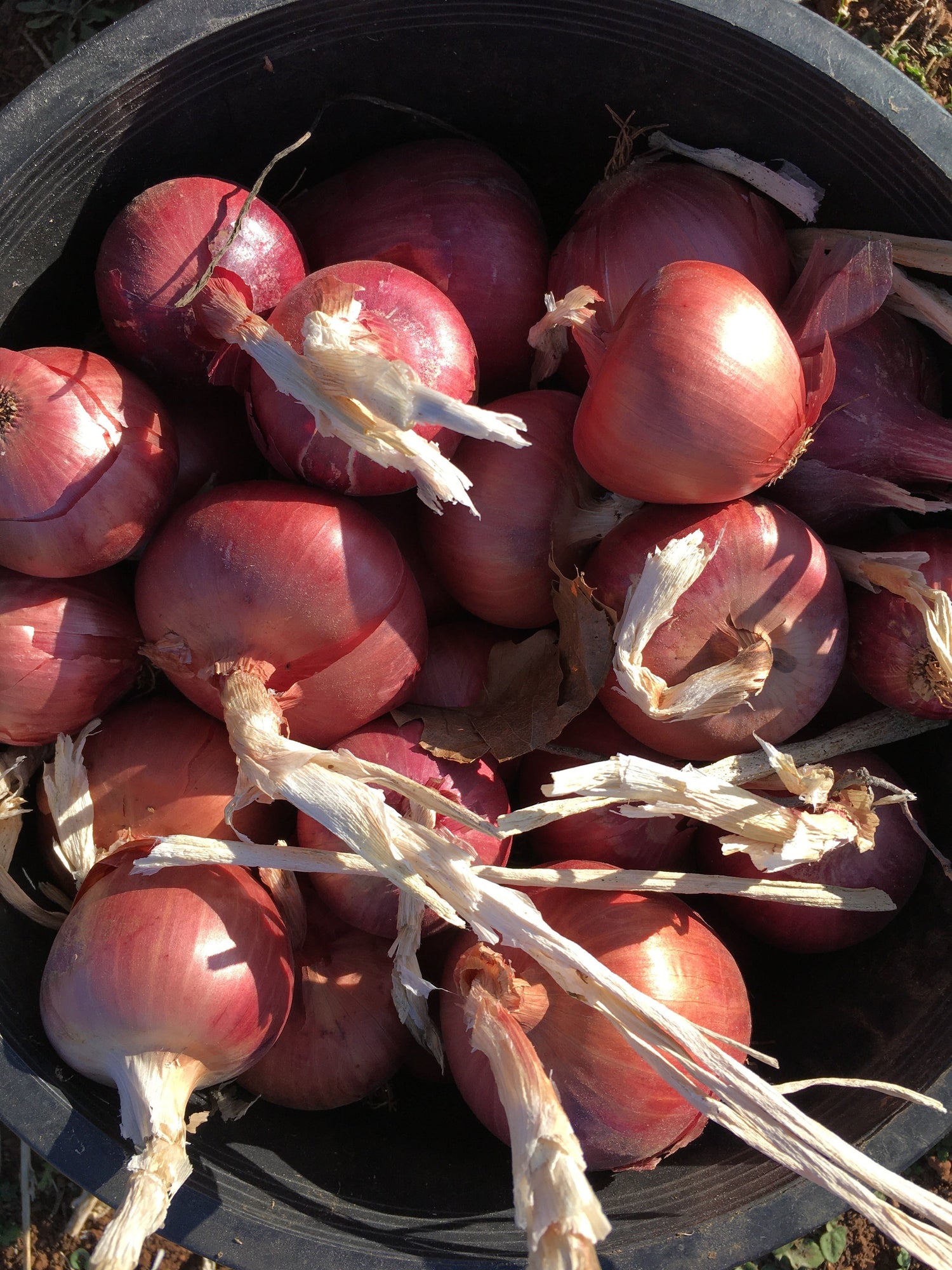 FALL GARDENS: FROM PLANNING TO PLANTING
FALL GARDENS: FROM PLANNING TO PLANTING
We cannot believe how fast summer is flying by here on the farm! August really snuck up on us and it is time once again to start thinking about the next planting season: fall!
August is the perfect time to start planning and planting your fall garden. There are a wide variety of seeds we carry that you can plant in the spring, summer, and the fall. We will post links at the bottom of each section to some of our easiest and most reliable varieties to try out in your fall garden.
If you have never planted fall crops and are a little intimidated, no worries, we are here to help! It is not much different than spring planting, the main difference being, obviously, it is hotter! Because it is so much warmer, you will need to be careful not to let your seed bed/seedling trays dry out or get too hot, as this can interfere with proper germination. We suggest placing them in a cooler, shady area until they start to come up. Then transfer them to a sunny area and keep them moist until ready to plant in your garden. If you are direct seeding crops such as beets or carrots, just be sure that they are kept moist by lightly misting or drip irrigating them frequently until they begin to emerge from the soil.
Where to Plant:
Because you will probably have limited space right now due to your summer crops still taking up space, consider places where you may be able to squeeze in additional crops. The new plantings may benefit from the shade provided by the plants already in place. For instance, perhaps you can sow some dill in between your tomatoes? Or maybe you would consider pulling up a few items that aren’t performing well anymore or are succumbing to disease to open up space for new fall plantings. Or if you don’t have any room in your main garden plot, perhaps consider containers for fall crops. Containers are nice because you can easily move them indoors should an unexpected frost threaten them.
When to Plant:
To decide when to sow, look at the maturity days listed on each packet, then count backwards from the typical first frost date for your area. One thing to keep in mind is that the hours of sunlight are dwindling toward the end of summer. As a result, it may take a couple more weeks over the crop time listed on the packet for your crop to mature. Maturity times aren’t as important for leafy greens (such as lettuce, kale, chard, or spinach) because you can harvest their leaves at any stage of growth.
What to Plant:
When choosing what you would like to start for your fall garden, it is fun to consider what ingredients you may need in the fall to compliment your still harvesting summer crops. For instance, would some cilantro be nice to go with an abundance of tomatoes and tomatillos? Or perhaps some green onions? Maybe you would like some greens to use in a favorite winter squash soup recipe? It’s also nice to plant a few things that you know you can harvest throughout most of the fall and most of winter (in milder climates), such as kale and chard.
To inspire your creativity, we have compiled the list below of some of our fall favorites that you can start in your garden now:
PEAS
Peas are a wonderful and easy crop to grow and are always popular additions with kids. It is great to get the little ones out in the garden to help plant and peas is one of the easiest to do with kids because they are fairly forgiving and a larger seed is easier to handle for little fingers. These can be started in trays or directly sowed in the ground. Cover by 1/2 inch. They will germinate in soil temps of 40-75 F. Peas planted in the fall and overwintered will have a head start on pea production. Peas are light frost tolerant but hard frosts will kill them.
Click on the link below to check out all of our wonderful and oh so sweet pea varieties:
https://www.redwoodseeds.net/collections/types?q=Peas
LETTUCE
This is a standard in any spring or fall garden and can be used to create lovely fresh salads all season. To germinate lettuce in a greenhouse use six packs or 100 cell trays. Fill with soil mix and plant 1-3 seeds per cell. Water in and cover lightly with soil mix, about 1/8 inch. Seeds should germinate in 5-14 days depending on temps. Transplant when good root growth has occurred. Transplant in a 6 inch triangle pattern to get large heads. To germinate in the field, prepare the seed bed and plant in rows made with the fingers or sprinkle plant. Cover seeds in rows lightly or gently rake in sprinkled seed. Keep seed bed evenly moist. You will harvest a lot of baby greens using this method and will need to thin for large heads.
Check out our blog on planting lettuce greens for additional tips and tricks here:
https://www.redwoodseeds.net/blogs/the-story-of-seed/grow-your-own-salad-greens
One of our favorite lettuce varieties is a beautiful red and green variety called Prizehead, you can find it here: https://www.redwoodseeds.net/products/prizehead-lettuce
BRASSICAS
Brassicas such as broccoli, cabbage and kale are, in our opinion, must-haves for a fall garden. They possess amazing health benefits and develop a delicious sweetness that only comes with cooler weather which make them a lovely addition to many fall soups and stir fries. Most brassicas will germinate very easily in the field or greenhouse. To start in trays cover by 1/8 inch. Brassicas germinate well in cool fall and spring weather, 40-80 F. Transplant when seedlings have their first true leaves. To start in the field, draw a shallow trench, 1⁄2 inch, with the blade of hand or a stick. Sprinkle seed in trench and lightly cover by no more than 1⁄4 inch. Keep seedbed moist and protected from birds! For large plants like kale, broccoli, etc. you will need to thin to achieve at least an eight-inch spacing.
One of our favorite brassicas is Red Russian Kale, which you can harvest throughout the fall and into winter months, see link below to order:
https://www.redwoodseeds.net/products/copy-of-kale-red-winter
BEETS and CARROTS
Both of these root vegetables are fantastic to start in the summer because, in most climates, you can actually store them in the ground and harvest as needed throughout the winter! How cool is that (no pun intended)?! Beets and carrots both do best directly sown in your garden soil rather than transplanted. They both should be planted by creating a shallow trench with your finger or a stick and then dropping in the seeds spaced approximately ¼ inch apart and then lightly cover with ¼ inch of soil for beets and 1/8 inch for carrots. Carrots can be especially tricky to germinate in warmer weather so be sure to keep the soil moist and consider covering the soil with paper bags, burlap or some other material you have available to help shade the soil. This will keep the soil cooler and maintain moisture to aid in germination. Remove covers just as seeds begin to emerge.
Here is a link to our available beets and carrots:

https://www.redwoodseeds.net/collections/types?q=Beets%20%2F%20Carrots
Chard
Nothing quite compares to the beauty that shiny green chard leaves bring to a fall garden. Chard performs well started in seedling trays and transplanted out when they get their second set of leaves and their roots have reached the bottom of their pot. Plant two seeds per cell or pot and cover with ¼ inch of soil. Keep in a cooler shady location until the seedlings begin to emerge, then move to a sunnier area until ready to transplant into your garden. Chard leaves can be harvested from the base of the plant moving up towards the top as needed for your favorite recipe.
Here is a link to our Rainbow Chard:

https://www.redwoodseeds.net/products/chard-red
Dill
This classic herb is a wonderful addition to a fall garden and can be used in many recipes for the end of summer pickling as well as savory fall soups and bakes. Make sure you pick a spot with plenty of vertical space, because dill can get very tall. This flavorful herb loves cooler weather so a fall planting is ideal. Direct seeding is best for dill, begin by drawing a shallow trench about ¼ inch deep. Sprinkle in your seeds and cover lightly with about ¼ inch of soil. Keep moist until seedlings begin to emerge. Harvest the feathery leaves as needed or wait until the plant produces seed heads which are also used for pickling.
Here is a link to our dill seed:
https://www.redwoodseeds.net/products/dill-bouquet
We hope this information has been helpful and we know that sometimes when you are nearing the end of summer your motivation to plant more tends to wane. But we promise, a little effort starting some seeds now and you will be so glad you did come October when your summer garden is wrapping up and your fall plantings start to roll in!
Happy fall gardening, may the weather be mild and your joy great!








